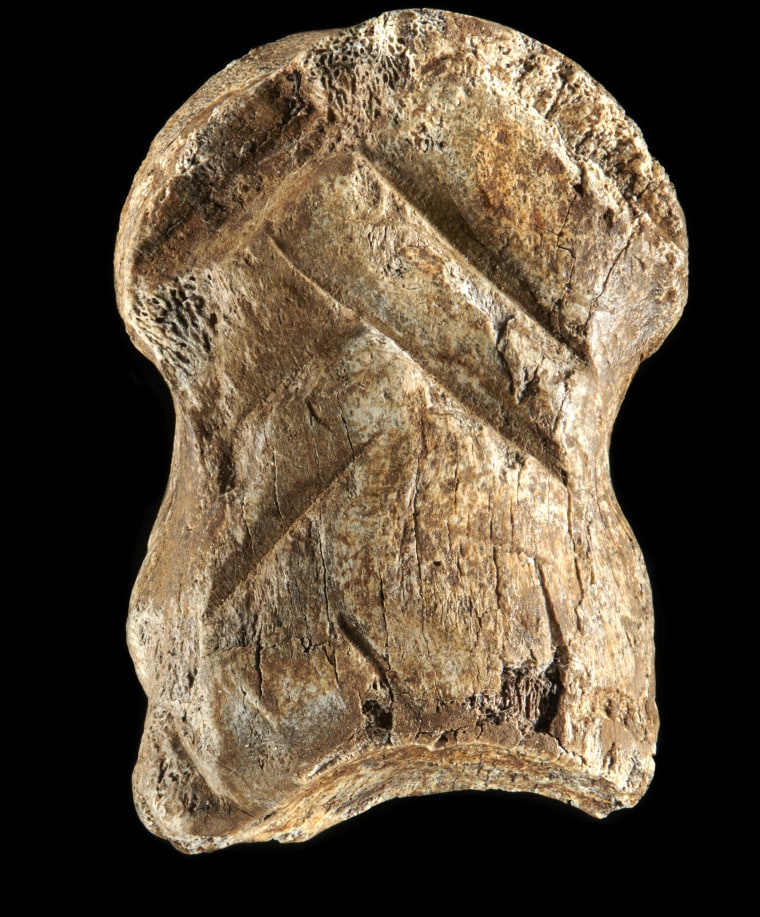ramonmercado
CyberPunk
- Joined
- Aug 19, 2003
- Messages
- 58,830
- Location
- Eblana
DNA evidence in the dirt.
Estatuas cave in northern Spain was a hive of activity 105,000 years ago.
Artifacts show its Neanderthal inhabitants hafted stone tools, butchered red deer, and may have made fires. They also shed, bled, and excreted subtler clues onto the cave floor: their own DNA. “You can imagine them sitting in the cave making tools, butchering animals. Maybe they cut themselves or their babies pooped,” says population geneticist Benjamin Vernot, a postdoc at the Max Planck Institute for Evolutionary Anthropology (MPI-EVA), whose perspective may have been colored by his own baby’s cries during a Zoom call. “All that DNA accumulates in the dirt floors.”
He and MPI-EVA geneticist Matthias Meyer report today in Science that dirt from Estatuas has yielded molecular treasure: the first nuclear DNA from an ancient human to be gleaned from sediments. Earlier studies reported shorter, more abundant human mitochondrial DNA (mtDNA) from cave floors, but nuclear DNA, previously available only from bones and teeth, can be far more informative. “Now, it seems that it is possible to extract nuclear DNA from dirt, and we have a lot of dirt in archaeological sites,” says archaeologist Marie Soressi of Leiden University.
“This is a beautiful paper,” agrees population geneticist Pontus Skoglund of the Francis Crick Institute. The sequences reveal the genetic identity and sex of ancient cave dwellers and show that one group of Neanderthals replaced another in the Spanish cave about 100,000 years ago, perhaps after a climate cooling. “They can see a shift in Neanderthal populations at the very same site, which is quite nice,” Skoglund says. ...
https://www.sciencemag.org/news/2021/04/dna-cave-dirt-tells-tale-how-some-neanderthals-disappeared
Estatuas cave in northern Spain was a hive of activity 105,000 years ago.
Artifacts show its Neanderthal inhabitants hafted stone tools, butchered red deer, and may have made fires. They also shed, bled, and excreted subtler clues onto the cave floor: their own DNA. “You can imagine them sitting in the cave making tools, butchering animals. Maybe they cut themselves or their babies pooped,” says population geneticist Benjamin Vernot, a postdoc at the Max Planck Institute for Evolutionary Anthropology (MPI-EVA), whose perspective may have been colored by his own baby’s cries during a Zoom call. “All that DNA accumulates in the dirt floors.”
He and MPI-EVA geneticist Matthias Meyer report today in Science that dirt from Estatuas has yielded molecular treasure: the first nuclear DNA from an ancient human to be gleaned from sediments. Earlier studies reported shorter, more abundant human mitochondrial DNA (mtDNA) from cave floors, but nuclear DNA, previously available only from bones and teeth, can be far more informative. “Now, it seems that it is possible to extract nuclear DNA from dirt, and we have a lot of dirt in archaeological sites,” says archaeologist Marie Soressi of Leiden University.
“This is a beautiful paper,” agrees population geneticist Pontus Skoglund of the Francis Crick Institute. The sequences reveal the genetic identity and sex of ancient cave dwellers and show that one group of Neanderthals replaced another in the Spanish cave about 100,000 years ago, perhaps after a climate cooling. “They can see a shift in Neanderthal populations at the very same site, which is quite nice,” Skoglund says. ...
https://www.sciencemag.org/news/2021/04/dna-cave-dirt-tells-tale-how-some-neanderthals-disappeared




